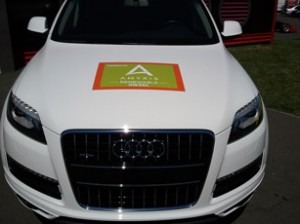Bioengineering is now being used to create a renewable fuel alternative to petroleum diesel. But unlike biodiesel, which is made from vegetable oil, this fuel is created by microorganisms.

Scientists at Emeryville-based Amyris, known for their work with the anti-malarial drug Artemisinin, have devised a process for synthesizing hydrocarbons similar to those found in regular diesel.
The first vehicle to run on this renewable fuel, an Audi Q7, premiered Thursday at Infineon Raceway in Sonoma. While the fuel won't be available at your local filling station anytime soon, it does represent a unique step in the expanding renewables' market.
Creating biodiesel is a chemical process that transforms vegetable oil into usable fuel for diesel vehicles. It's made through a chemical reaction in which plant oils, methanol and lye are mixed and react to form glycerol (i.e. soaps) and biodiesel.
The process of creating diesel from sugar and yeast is slightly more complex. Instead of a single chemical reaction, this new process must be biologically engineered by changing the genetic code of the yeast -- to create a different molecule. Simply put, it's hijacked and told to make something different. The process is similar to the way insulin in a lab is created for the treatment of diabetes. Before scientists could manipulate bacteria, they extracted insulin from pigs and cows.